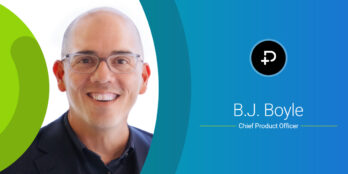
Patient-Centered Care: Defining What It Means and the Value It Holds for Healthcare
 10 min
10 min
ACOs & Risk-Bearing Providers, Hospitals & Health Systems, Providers
Patient-centered care has been a trending topic in healthcare for the past decade. While patient-centered care sounds self-explanatory — shifting focus to the patient and their needs in a healthcare setting — there’s more to it than that. At its core, the importance of patient-centered care is about improving the quality of the relationship between doctor and patient and empowering patients and their families to have an active role in decision-making and treatment plans.
Providing patient-centered care requires adjustments to the current method like changing how success is measured in healthcare; training clinicians on communication strategies; and harnessing health information technology (IT) to improve care coordination and access to medical records. Before these fundamental shifts in healthcare delivery can happen, it’s critical to define what is patient-centered care and what value it offers the U.S. healthcare system.
Placing Patient Outcomes First: Shifting from Fee-for-Service to Value-Based Healthcare
According to an article published by the National Academy of Medicine, patient-centered care means “providing care that is respectful of and responsive to individual patient preferences, needs, and values and ensuring that patient values guide all clinical decisions.” This conceptualization of patient-centered care isn’t new.
The Institute for Patient- and Family-Centered Care (IPFCC) has been around since 1992, advocating for healthcare providers to address quality issues by viewing the patient and their family as key partners in decision-making and treatment planning rather than passive recipients. The IPFCC has been providing leadership to institutions, organizations, and policy makers to advance the movement from a physician-centered care system to a patient-centered system in which patients are included as valuable collaborators and advisors at all levels — from facility design to organizational planning to treatment approaches.
While the concept of patient-centered care was still novel in the 1990s and early 2000s, the advent of healthcare consumerism brought it to the mainstream more recently. Healthcare consumerism views patients as consumers of healthcare who make informed choices based on both health and financial needs. This shift to seeing patients as partners in decision-making and consumers of healthcare has become a widely held belief, further supported by a 2019 Modern Healthcare survey of top healthcare CEOs — finding that 70% have restructured their organizations to be more patient-centered.
The renewed emphasis on patient-focused care intersects with the value-based healthcare model that has emerged in response to flaws attributed to the fee-for-service (FFS) model under which healthcare in the U.S. has been operating for decades. Fee-for-service simply means payers reimburse providers per service delivered to patients, while value-based care reimburses providers based on efficacy and quality of outcomes.
Critics of the FFS model believe that providers trying to achieve high profit margins (the main indicator of a successful medical practice) aim to see higher volumes of patients to increase the opportunities to offer more services for reimbursement from payers. This high-volume approach can leave doctors overbooked and unable to spend enough time with each patient. To make up for less time, doctors may write more prescriptions for medications, offer referrals to specialists, order extra lab/diagnostic testing, and recommend hospitalization in an effort to give the impression of high-quality care by offering the patient an immediate solution. Advocates say patient-centered, value-based care has the potential to end the practice of excessive or unnecessary testing and procedures, high-volume medicine, and waste in healthcare spending that many see as byproducts of the FFS model.
However, by moving away from the FFS model towards value-based care that reimburses based on the overall outcome after treatment, the trend of high-volume healthcare that coincides with a higher rate of services offered may decline. Instead, the goal would be to improve the relationship between provider and patient to better understand their needs and what they would consider a successful outcome. This patient-centered approach has proven to drive down costs and increase satisfaction among providers and patients.
The Value of Centering Patient Needs in Healthcare
While the exact number may vary, it’s well known that the cost of wasteful spending in healthcare is somewhere in the hundreds of billions each year. A review of healthcare waste studies published in 2019 estimated that 25% of healthcare spending could be attributed to waste (overtreatment, overpayment, and low-quality care) and that the dollar amount is somewhere in the range of $760 billion to $935 billion annually. With that as a baseline, there’s certainly room for improvement.
There are many factors that influence why healthcare costs are so high, but the FFS model may play a role. Because providers are incentivized to provide more services to patients, there’s more focus on treating people who become ill or suffer a health event rather than preventive care. Patient-centered, value-based care is not a cure-all, but studies have found that facilities offering patient-centered care do a better job of managing chronic conditions, which can reduce costs related to redundant testing and higher hospital utilization. Given that six in ten adults in the U.S. live with a chronic disease and four in ten have more than one chronic disease, preventive medicine is key. Working closely with patients who live with chronic conditions can help to better understand their needs, goals, and any social, behavioral, or economic barriers they face to improve health and reduce costs. Put simply, a blood test will not explain to a doctor why a patient is failing to take their prescription medication regularly, but a conversation with a patient will.
A study published in the American Journal of Managed Care found that a patient-centered medical home (PCMH) in Pennsylvania that treated HIV-positive Medicaid patients with comorbid medical and behavioral health issues realized savings of $214 per month per patient, compared to other healthcare providers. The cost savings were attributed to reduced inpatient utilization that was balanced by a higher rate of prescription utilization.
The main reason patient-centered care and value-based care models have moved into the spotlight relates to the idea that when doctors and patients are better able to communicate, the outcomes improve. Patients feel better understood, allowing the doctor to offer more effective treatment plans and follow up. In fact, a study found that patients who don’t find their doctor to be positive and patient-centered don’t feel as satisfied or enabled, and may suffer greater burden of symptoms and require more referral services as a result. Giving healthcare providers and patients more access to medical data and health IT can also play a key role in moving towards patient-centered care.
How Health IT Will Help the Shift to Patient-Centered Care
Health IT plays a key role in providing high-quality care. Providers need access to technology and data to ensure they can deliver appropriate and timely care to patients and to help them coordinate care throughout their health journey. The cost of overtreatment or low-value care is estimated at $13 to $28 billion per year while the cost of failed care coordination is estimated to be in the range of $29 to $38 billion per year. This is precisely where health IT can provide an effective solution.
Accessing patient health information is critical to delivering quality care. If a patient goes to a new doctor, and that doctor can’t access their complete medical history, the burden falls to the patient to fill in the gaps and can lead to an incomplete picture of their past medical experience. This gap in information will undoubtedly affect the ability of the doctor to provide high-value care and can lead to redundant testing or imaging. For the patient, this can erode their sense of trust with a provider if they have to go through the same tests again and feel responsible for providing information they might expect their doctor to access.
Likewise, patients need to be able to access their own medical records securely to be empowered to make decisions that best serve their health goals. Offering access to a patient health portal can solve this issue and can lead to transparency between the provider and patient, which builds trust. For example, by giving patients access to clinical notes in a patient portal — a data category required by the United States Core Data for Interoperability (USCDI) in electronic health records (EHR) — doctors are forced to consider the patient’s feelings when writing. Open clinical notes became a requirement as part of the 21st Century Cures Act, although this practice has been around for longer than that, and it has proven to be an effective tool for increased patient engagement, encouraging doctors to ensure that they accurately capture the patient perspective.
In addition to accessing patient data, healthcare providers can leverage health IT to provide better care coordination and follow ups by monitoring high-risk or high-needs patients. Providers can use data in the EHR or the health information exchange (HIE) that they utilize to determine which patients may benefit from regular outreach efforts, such as those with chronic diseases, comorbidities, substance use, or other behavioral health issues. Care teams can coordinate outreach and preventive interventions that target at-risk populations using data and patient-centered metrics to manage health trends in that community. For example, doctors can work with their HIE or a vendor to set up admission, discharge, and transfer (ADT) notifications for high-risk patients. They can then monitor those patients and flag them for follow up if there is an ADT notification.
To demonstrate the value of health IT for patient-centered care, in September 2015, the Palm Beach Accountable Care Organization (PBACO) began to receive ADT notifications from Florida HIE Services to increase the number of follow-up visits and reduce post-discharge expenses. After implementing these notifications to leverage Transitional Care Management (TCM) savings, PBACO earned $30 million in savings after one year and contributed $62 million to the Medicare Shared Savings Program (MSSP), making them the second-highest earner.
These are just a few ways that health IT can contribute to the patient-centered care movement by using data and technology to provide more personalized care and enhancing the relationship between patient and provider with greater communication and transparency. At its core, the access to data and health IT tools can build greater trust and understanding between a care team and the patients they serve, which is the very foundation of the patient-centered, value-based care model.
This article was originally published by Audacious Inquiry, now a part of PointClickCare.
October 20, 2021





